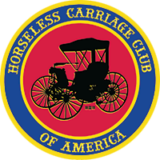Harold Sharon
If you remove those tired old pistons with the 1/4″ wide rings, and install modern pistons of the same height, with modern rings, the compression will increase remarkably. This is not a change in compression ratio.
Taller pistons would reduce the upper volume when the piston is at top center. This is an increase in compression ratio.
To digress a bit, turbo-charged engines have a surprisingly low compression ratio. The turbo-charger packs air in at a higher pressure than a normally aspirated engine (like 3 atmospheres instead of 0.8 atmospheres in the normally aspirated engine). The result is higher pressure when the fire is lit, and more power. Power is related to fuel consumed, so if the turbocharged engine has 4-5 times as much air in the chamber, it has 4-5 times as much fuel, too. But without radical changes to your old engine to accommodate a turbo, the simple thing to do to get a bit more performance is to increase the compression ratio.
All our brass cars have a very low compression ratio because the old-time engineers just didn’t recognize its value. Also, they had 30 octane fuel! We have 87. Remember, if you increase the compression ratio from say, 4;1 to 5;1, when driving down the street alongside a standard similar car, your compression pressure is the same as his. If it were more, you’d be passing him.
Your extra compression pressure will only be used when outperforming the standard car. Used judiciously, you won’t overwork your engine. You may have to ease the spark lever back when climbing a hill at lower speed in high, though.
